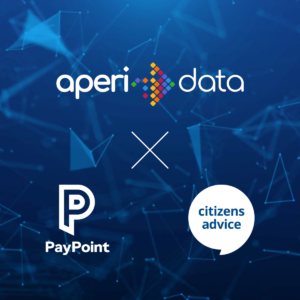Open Banking is no longer limited to income checks or thin-file customers. Credit providers and collections teams are building it into their strategies across the full customer journey, from onboarding through to long-term support. The results? Stronger affordability decisions, earlier signs of financial pressure, and better outcomes for customers and teams alike.
As part of our latest eBook, How Open Banking is Redefining the Credit Journey, we asked organisations already using Open Banking where it’s adding the most value and what advice they’d give to others.
Here’s a preview of what they shared.
The credit lifecycle: Where Open Banking is improving decision-making
The credit lifecycle isn’t broken at one stage, it’s under strain at every point. In the full eBook, we unpack where critical decisions are being made on outdated, incomplete, or retrospective data, and where firms are using Open Banking to change that. We also look at how Open Banking is being integrated to address longstanding friction across all five stages.
Here’s a preview:
#1. Application
Many affordability assessments still rely on credit files that may be 30 to 60 days out of date, or self-declared income with no supporting evidence. Essential costs aren’t separated from discretionary spend. Risk behaviours like gambling or HCST credit use are missed entirely. We show how firms are replacing document upload with permissioned data and building confidence in thin-file cases using categorised income and spend.
#2. Underwriting
Thin files are misclassified. Gig income is penalised. Non-credit commitments like child support or subscriptions don’t show up. In the guide, we highlight how behavioural overlays, such as income stability, rent payment reliability, and expense volatility, are helping risk teams segment applicants more precisely without increasing operational burden.
#3. Monitoring
Most lenders lose visibility once the loan is live. Income drops, benefit switches, and behavioural changes go undetected until a payment is missed. We cover how firms are using ongoing transaction monitoring and alert triggers to improve early risk identification and operational response.
#4. Collections
Segmentation is often based on balance or ageing, not actual financial stress. That means vulnerable customers may be missed, and engagement happens too late. We share how Open Banking data is being used to reprioritise outreach, improve right-party contact, and inform collections strategies based on real-time affordability.
#5. Remediation
Support plans are still based on static I&E forms, often with no review mechanism. That creates risk for firms and customers alike. The eBook outlines how live affordability data is helping automate reviews, pre-screen for support options, and track plan sustainability over time.
Each stage has its own challenges. The firms seeing the strongest results are those applying Open Banking with intent, designed around real operational use.
Getting started: Why smaller steps lead to bigger results
The firms seeing the strongest outcomes from Open Banking use it with purpose.
Several experts shared the value of starting small, focusing on a defined use case, building confidence internally, and scaling once the benefits were proven.
“Start small. Don’t try to use it for everything at once.”
— Faye Bailey, Advance Credit Union
“Uptake is lower in the collections journey… but for those who do consent, it enables us to offer more accurate, fair, and supportive solutions based on real-time financial data.”
— Samantha Fogerty, Payl8r
Some organisations began by replacing manual income verification. Others used transaction data to reduce referral volumes. A few focused on retention and remediation. In each case, the starting point was clear and the benefits built from there.
“Ensure the right people are involved from the outset. Education of customers around Open Banking is also key—once they understand the tech, they feel more comfortable and secure.”
— James Goddard, Qualco UK
Once the foundations are in place, the next step is making the experience as seamless and customer-friendly as possible.
Improving consent: Design the journey, not just the data flow
Open Banking only works when customers opt in. That means the way consent is introduced, explained, and requested plays a critical role in uptake.
Even small points of friction, like extra clicks, unclear messaging, and poor timing, can reduce conversion and limit value. One provider flagged this early on:
“We had layered too many OB triggers… even small friction points can have a big impact on conversion.”
— Samantha Fogerty, Payl8r
Several organisations emphasised the importance of clarity and simplicity in customer communication. Explaining what Open Banking is, how it works, and why it’s being used builds confidence and leads to higher consent rates.
Others found that a single, well-timed ask, designed around the customer’s context, outperformed multiple prompts scattered across the journey.
The main takeaway: Capturing consent, when done well, unlocks better decisions, stronger engagement, and improved customer outcomes.
Where the value shows up: From approvals to collections outcomes
For firms already using Open Banking data, the benefits are clear and measurable. Some are seeing an uplift in application approval rates. Others are using real-time data to offer more tailored support to customers in financial difficulty. The common thread is practical, business-led impact.
“Approval of low credit score customers. Robust defence to irresponsible lending.”
— Samantha Fogerty, Payl8r
“Better customer outcomes, identify red flags quickly.”
— Faye Bailey, Advance Credit Union
“We are seeing an increased number of payment plans being kept to.”
— James Goddard, Qualco UK
Across the lifecycle, Open Banking is being used to:
- Approve more thin-file and sub-prime applicants with confidence
- Spot early signs of income disruption, benefit switches or risky spending
- Offer more accurate, sustainable repayment plans
- Strengthen the evidence base for affordability and vulnerability outcomes
These outcomes go beyond operations. They support compliance, improve customer relationships, and make a clear commercial case for change.
What helps implementation succeed? Practical advice from users
The firms that have embedded it successfully talk about internal ownership, process fit, and keeping things simple from day one.
“Ensure the right people are involved from the outset.”
— James Goddard, Qualco UK
“Use an API connection with the back-end system (Sercle).”
— Faye Bailey, Advance Credit Union
“Start small. Don’t try to use it for everything at once.”
— Faye Bailey, Advance Credit Union
When it works, Open Banking data becomes part of the day-to-day, supporting affordability decisions, identifying early risk, and improving customer engagement without adding friction or cost.
📥 Want more real-world examples?
The full eBook includes:
- A detailed breakdown of the five key stages in the credit journey
- Real-world challenges and where data gaps still exist
- Practical ways to embed Open Banking data into credit, collections, and support strategies




